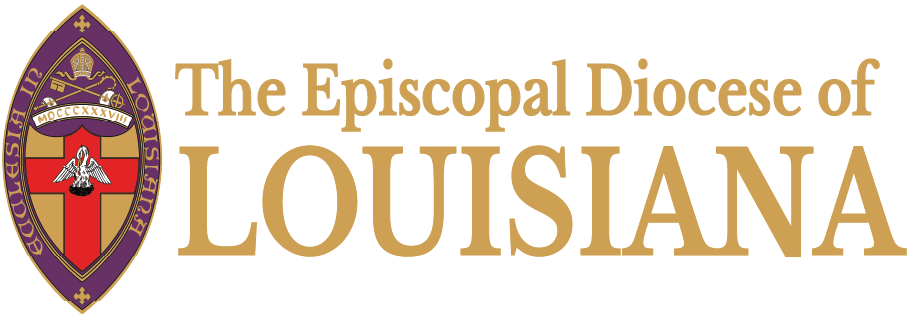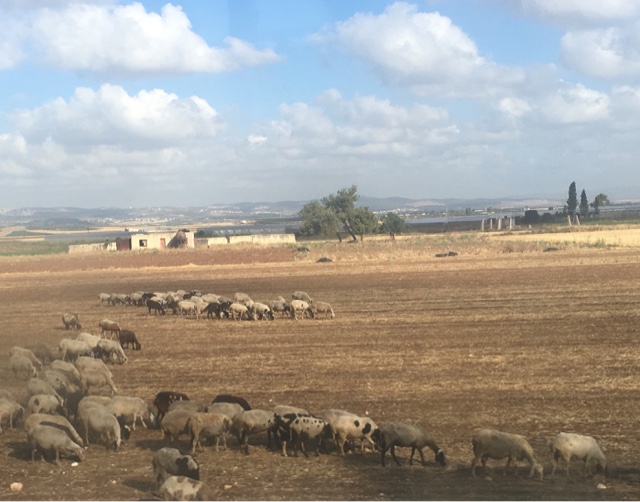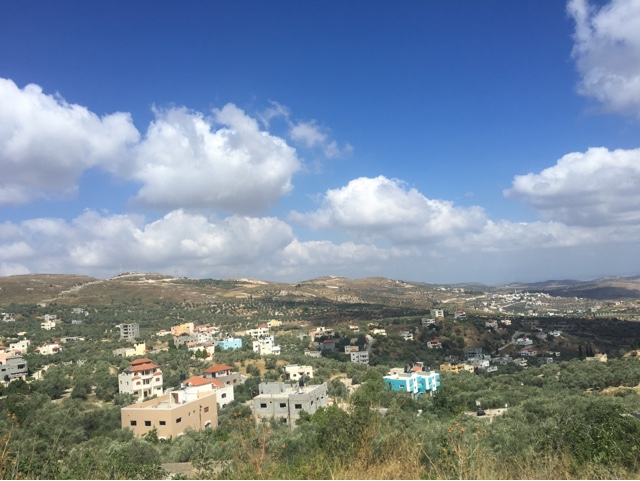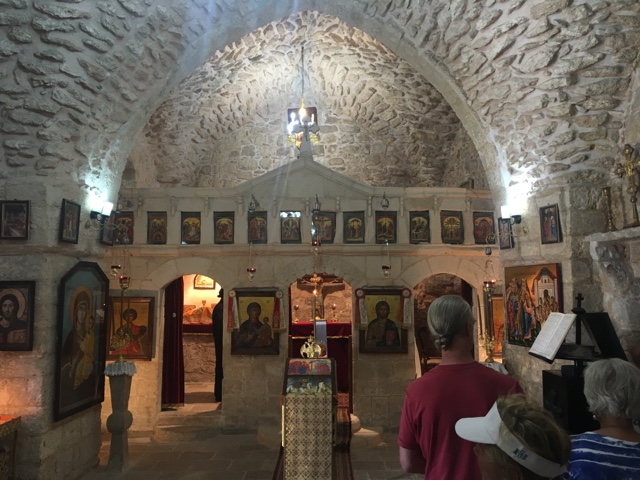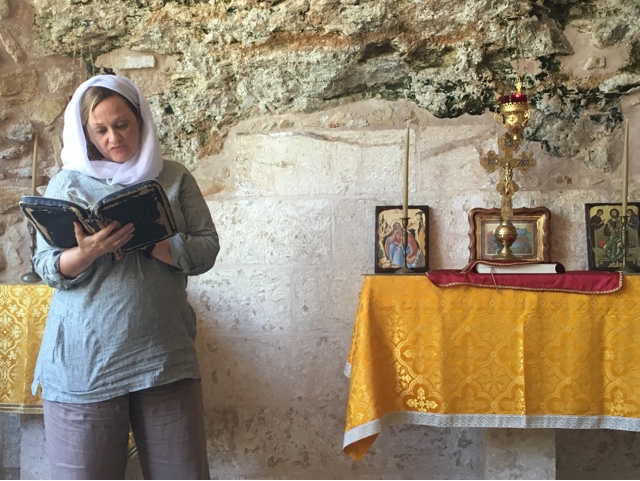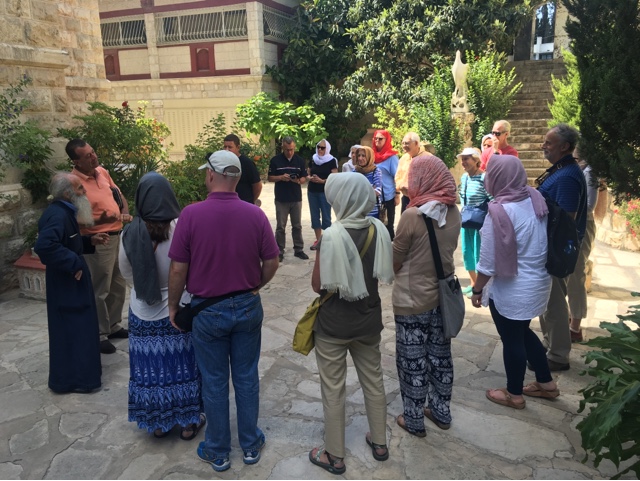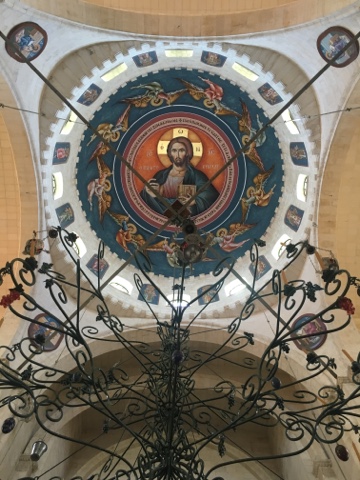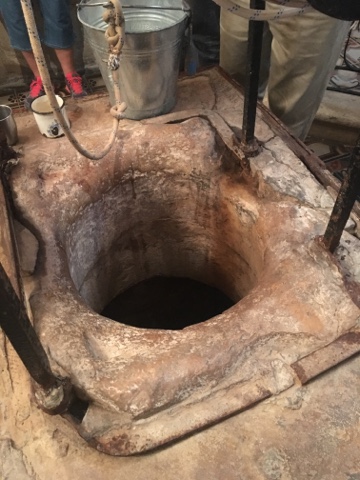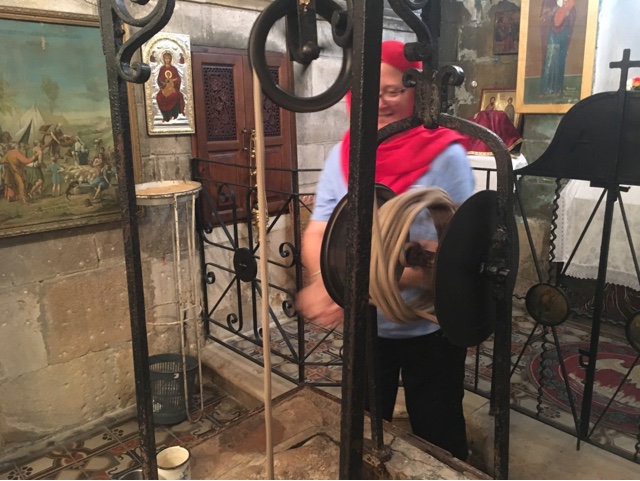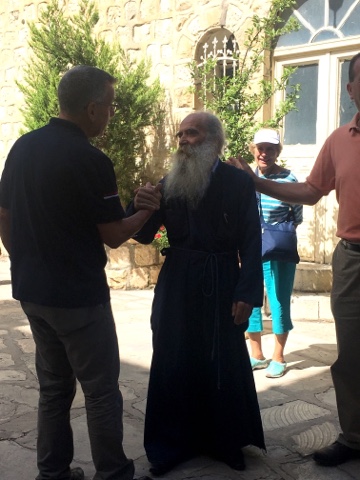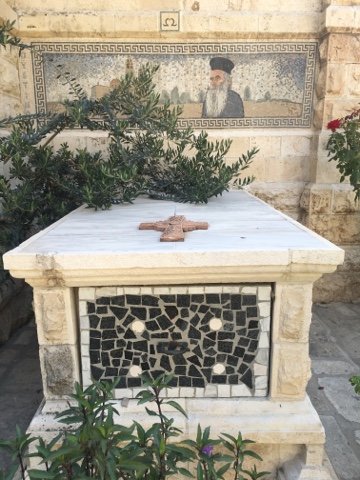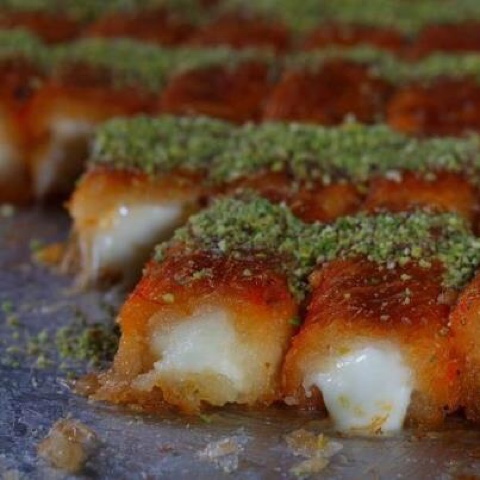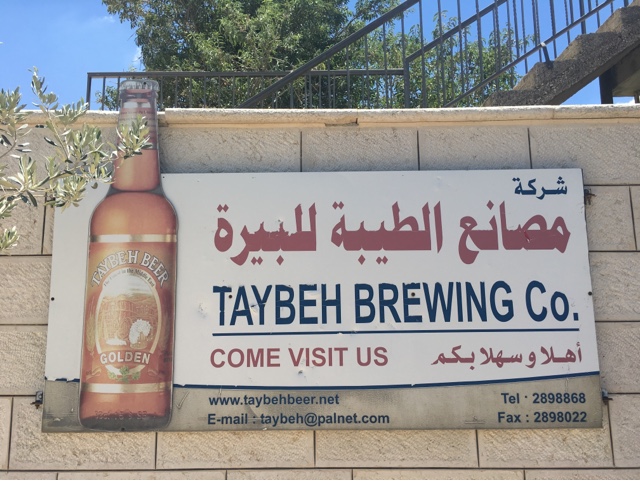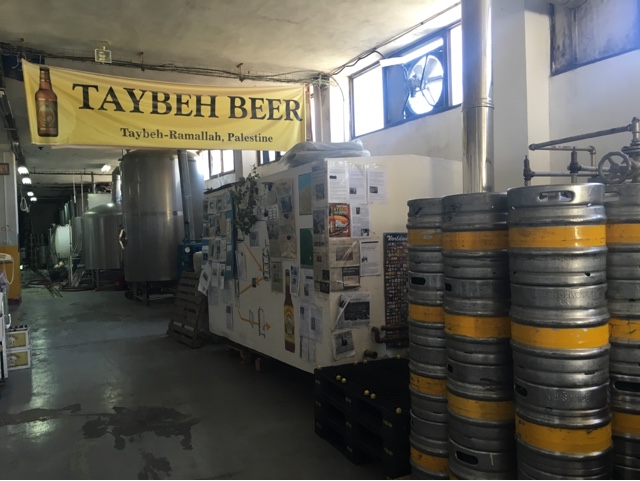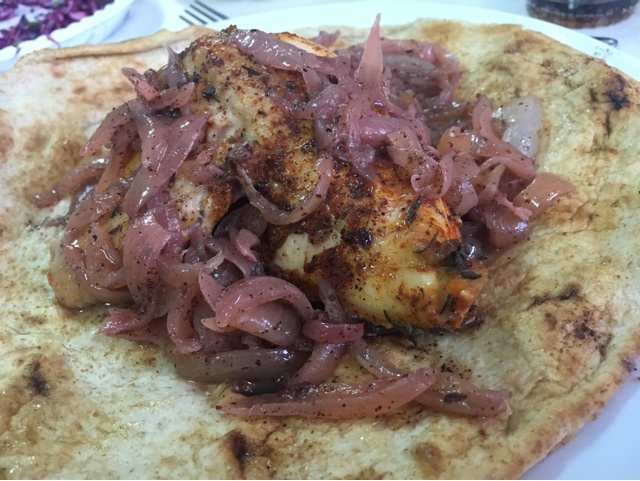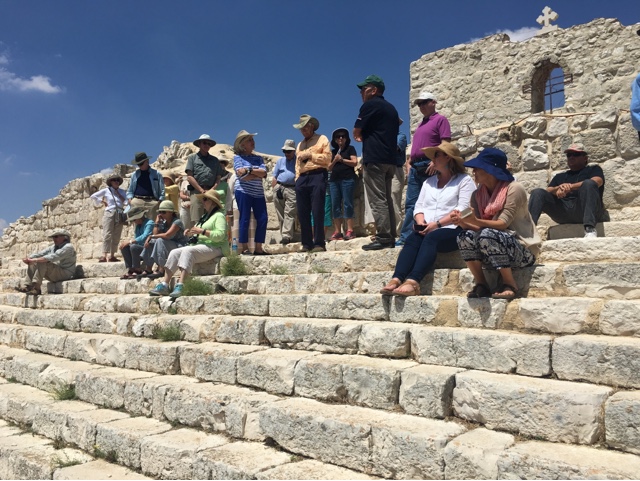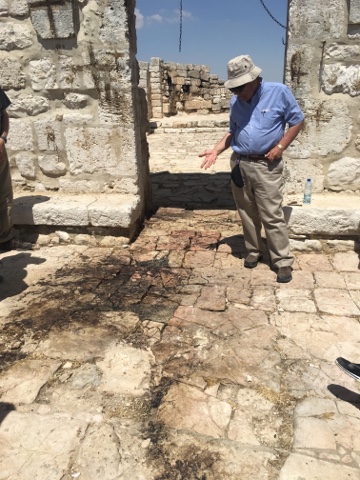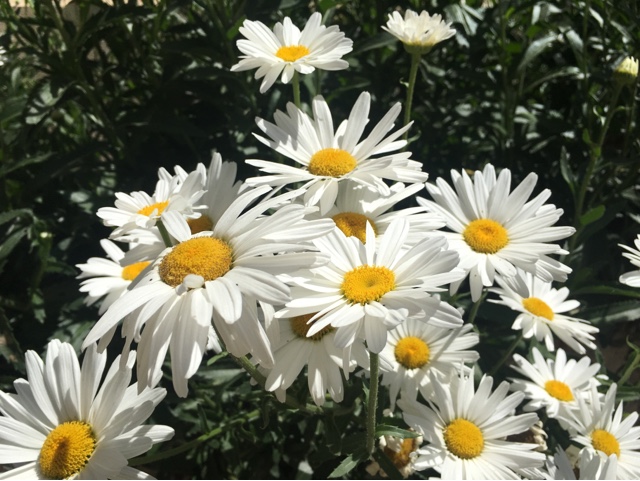[This article Burqin, Nablus, Jacob’s Well, Taybeh, Kanafe, and Beer appeared first on EDOLA Holy Land Blog.]
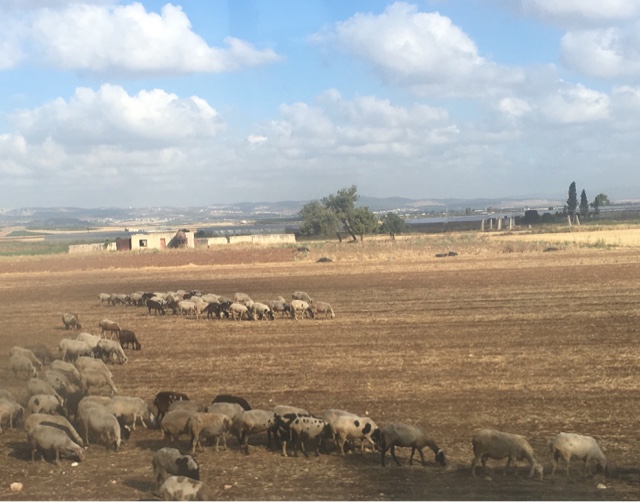
Friday, June 9
This morning, the Sisters of Nazareth made us a great breakfast and we set out early in separate groups (NC / LA). Our Louisiana pilgrims drove through the region of Mt. Gilboa and mountains of Gilboe.
Gilboa means boiling springs or bubbling springs.
It was an unusual ride. Today being Ramadan and a Friday, all of the streets were empty and almost everything was shut down. An Israeli checkpoint had also been closed so we took a slightly longer route to reach our destination. No tourists were anywhere in site except our group.
Our first stop was the village of Burqin in Palestine. It is a small, picturesque, and hilly townlet of about 7,000 people. It is said that Jesus passed through Burqin from Jerusalem to Nazareth and on his way, he heard cries from ten lepers who were quarantined in a cave. The first church on the site was built in the 4th century by the Byzantines. Only a handful of Christian families still live in the town.
We walked up a very steep hill to the Burqin church (also named St. George’s Church.) It is a Greek Orthodox Church and considered to be the 5th oldest Christian holy place. In addition to Jesus’ miracle of healing the ten lepers, another miracle is said to have taken place by St. Georagios (George) involving the saint’s appearing to a badly-behaved schoolboy awaiting his teacher’s forgiveness so he would not longer be mute.
Our next adventure was a drive through beautiful Samaria and to the city of Nablus. Nablus (nea-polis / new city) is also known as Shechem. This is a large Palestinian city (originally founded by Vespasian) and holds one of the largest universities in the Palestine areas.
Here we visited another gorgeous place: St. Photini the Greek Orthodox Monastery.
St. Photini is remembered as the Samaritan woman at the well who drew water for Jesus. She accepted the “living water” from Christ. Photini means “The Enlightened One”.
This church is also the home of Jacob’s Well underneath the main sanctuary. One can still draw and drink fresh water from it, though it does involved a bit of heavy lifting.Think of the people who go to wells daily and wait in lines to draw water they must walk back to their homes. It is not easy.
Our group got to hear how long it takes (4-5 seconds) for water to fall down the well and learned that it is 133 feet deep. Scripture was read and then we drew water from the well and enjoyed a cool and refreshing drink of it.
Fr. Justinian, the priest, is an elderly man who has been responsible for restoring and maintaining the church. He is an expert iconographer and the church is filled with his beautiful work alongside Byzantine era mosaics and more. He is a very sweet man.
Fr. Justinian walks by his own tomb every day – he says it keeps him humble – and will be at rest one day underneath his artwork and the church he so dearly loves.
It was time for dessert…..wait BEFORE lunch?!
Of course! We stopped at a kanafeh shop and got to see it being made. Large machines separate shredded wheat into long strings which are then rolled together with a slightly sweet mixture of goat and cow cheeses and then baked, soaked in honey water, and topped with pistachio ganache. One can rarely say no to kanafeh.
Next we continued through the West Bank to Taybeh, the last all-Christian Community in the West Bank and home of the Taybeh Brewing Company.
Not only do they make great beers, wines, olive oils, and soaps, but they are the first Palestinian brewery and export to many places around the world. They have 15 people on staff and must endure unpredictable electrical, water, and other shortages – all out of their control. They also have tough times exporting their beer but we saw firsthand their resilience and positive, hopeful outlook. They use malt from France, yeasts from England, and hops from the Czech Republic. They use local fresh spring water and they put back energy and hope into the local community. “If we were to get up and leave, there would be no hope for the future.” said our host.
Everyone enjoyed tasting the beer and learning about the process of making it and the community of Taybeh. Taybeh basically means “delicious”.
Speaking of delicious…. now our lunch was served and WOW – today’s delicacy was Musakhan.
It is a small chicken roasted slowly with caramelized onions, sumac, olive oil, a few spices, and is laid on top of a lightly toasted pita. Here is a recipe! You’re welcome in advance! 🙂
Our last stop today was the St. George’s Orthodox Christian Church at Ephraim. It was in ruins, but is still used by the local Orthodox Christian community. The community is one of two existing Christian churches that still really do make sacrifices as offerings of thanks to God. We saw evidence of this. When they want to give thanks to God, they sacrifice a lamb and take 1/4 for themselves and give 3/4 away to the poor in the local community.
We are now back at St. George’s Cathedral in Jerusalem and will meet for dinner at 7:00 PM. After such a busy and physically active few days, it is nice to have a few hours of rest before gathering again!
HERE is today’s video collage! 🙂
Source: EDOLA Holy Land Blog | Burqin, Nablus, Jacob’s Well, Taybeh, Kanafe, and Beer
